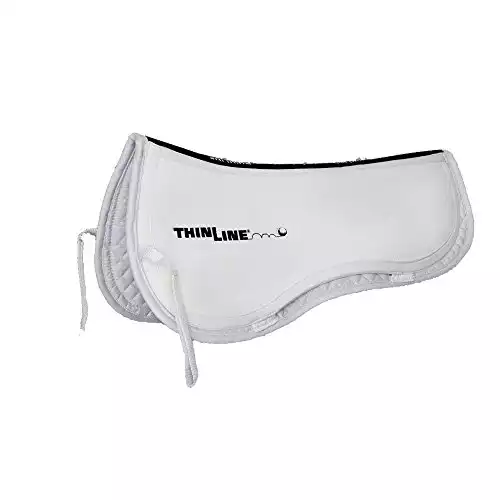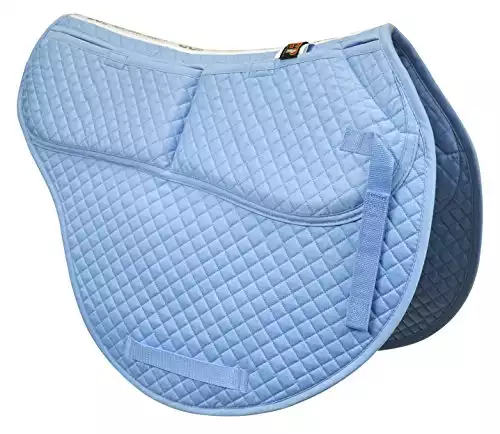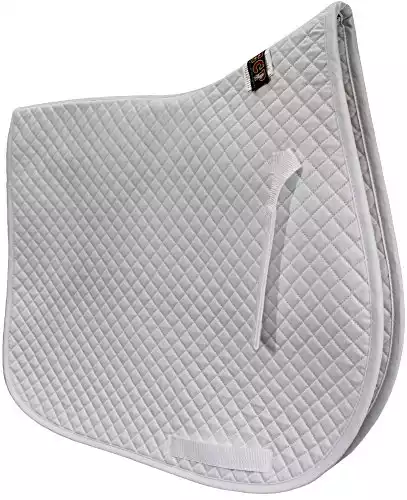Picking a saddle pad for your horse!
Picking a saddle pad can make your head spin. Here are some guidelines that can make it easy for you to narrow down a choice. And then you can just pick a color! Let’s start with English pads.
jump to shopping
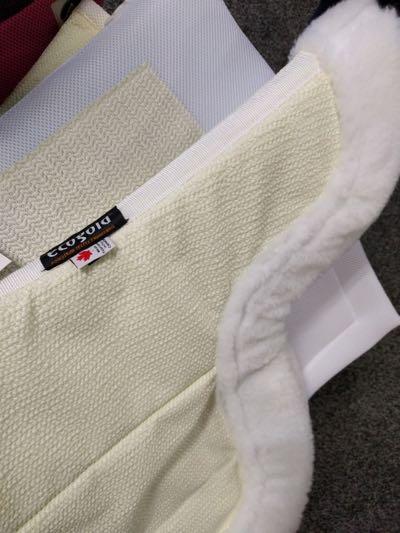
Saddle pads are made from all different specialty fabrics – like these no-slip types.
- First, the pad should be large enough that all parts of your saddle have somewhere to sit. So, your saddle pad should be long enough to be longer than your saddle flaps and also long enough front to back.
- I also firmly believe that your saddle pad should be cut on the top line to mimic the withers. This is more common in dressage pads, although it’s seen more now in hunter pads as well. The photo below is of a hunter pad without a contoured topline. I would call this “MEH”. Below that is a saddle pad with a nicely contoured topline. I would call that “YEAH”.

“meh”
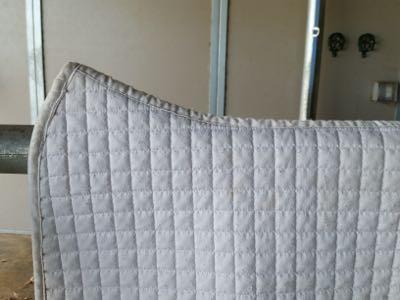
“YEAH”
- Your saddle pad and accessory pads should fit so that you can tuck all of them into the gullet of your saddle. Otherwise, the downward forces of your weight and the tack pull the pads downward onto the sensitive withers and spine. If the pad is snug to the saddle, the spine stays free and clear. You can read more about fitting your saddle pad here.
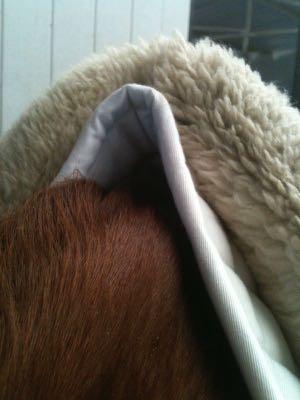
Make sure the withers and spine have room to move up!
- Another point to consider is that your saddle shouldn’t rest on any seams. Watch out for piping also, if it’s under a saddle it can cause pressure sores and hair loss. Ouch! As a general rule of thumb, I like the saddle pad and numnah and cantle to create “steps”, instead of all three edges stacking on top of each other. Here’s a photo to demonstrate the steps.

So, you have a saddle pad for your horse, now do you need a sheepskin or neoprene numnah or a “bounce pad” or a pad with shims?
- Ask your saddle fitter.
- Yes, there are a lot of choices, all equally effective. Usually, it boils down to the cost and material choice that you prefer. I like sheepskin, which is traditional and popular but requires some elbow grease to maintain. Neoprene does not breathe, so I like to avoid that material if possible. Some accessory pads are designed to lift the cantle for a more swaybacked horse. Again, your saddle fitter can help you in this area. Nine times out of ten a properly fitted saddle doesn’t need anything more.

A numnah, not needed for every horse/saddle combo.
For Western pads, I love the great old Navajo blankets.
Easy to use, easy to clean, great color choices. The super thick, almost puffy square pads have come a long way. They have been traditionally square, you can now find them with cutbacks over the withers and with a contoured topline to mimic the wither shape. I suggest one of these instead of a traditional square pad. I have also seen newer Western pads that are thinner and more streamlined, and better mimic the shape of the saddle. Again, tuck the pad or blanket into the gullet.
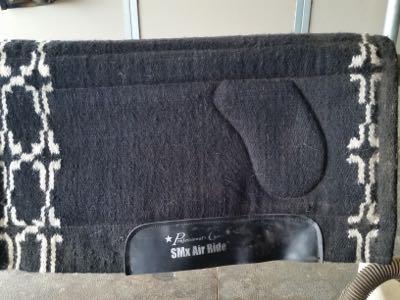
A “meh” western pad.

A “YEAH” western saddle pad.
What’s your favorite type of saddle pad and how on earth do you pick one to buy? Or ten to buy?

Stock up here for your horse supplies! As an Amazon Associate, I earn from qualifying purchases, but it’s ZERO extra cents to you. You can also visit my Amazon storefront here: PEG storefront.
Thank you!









